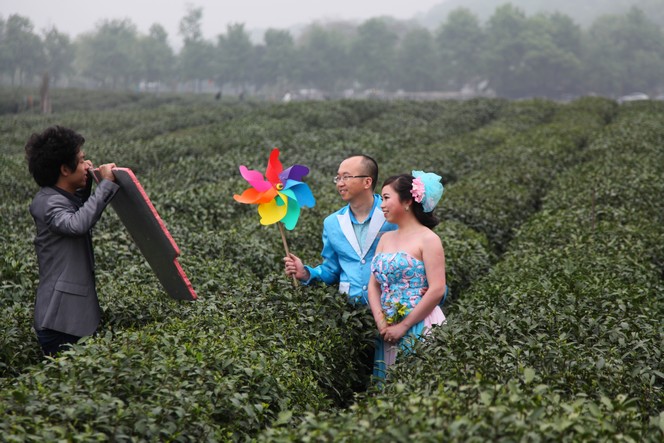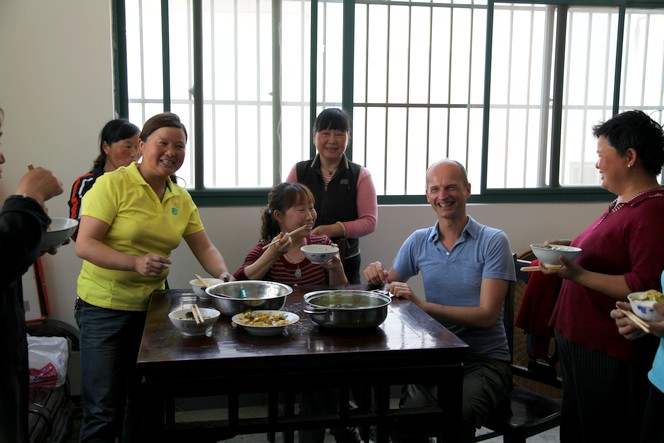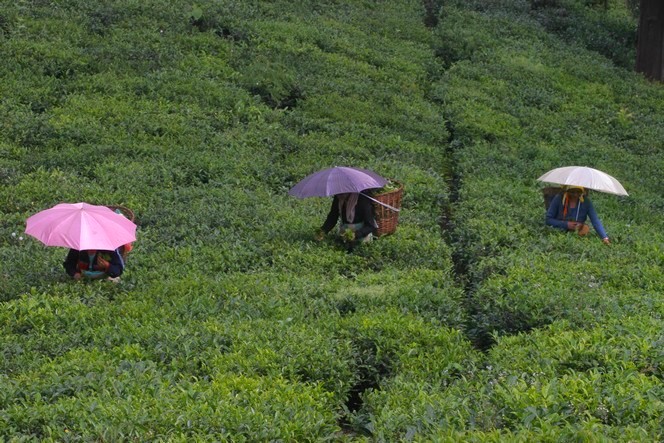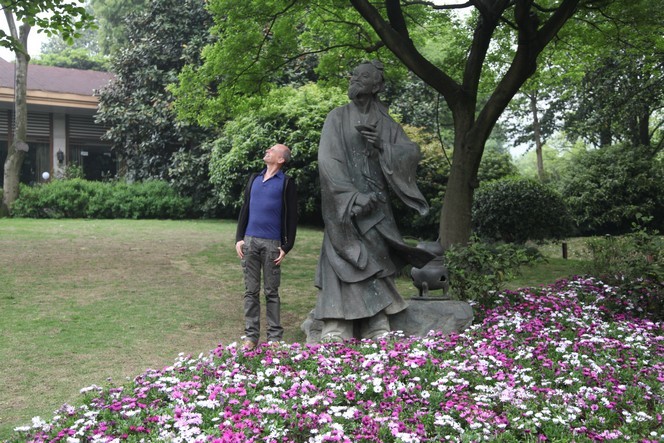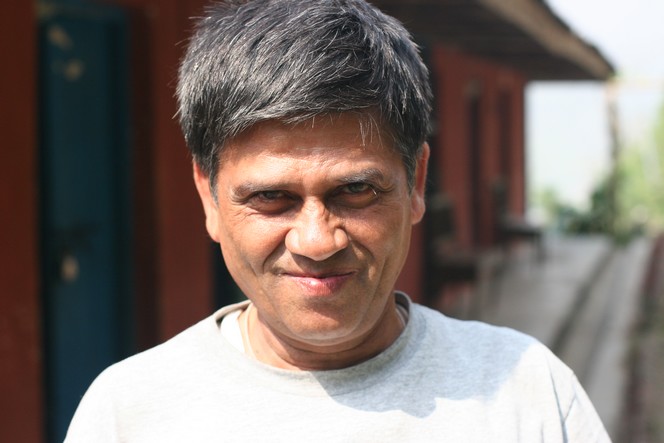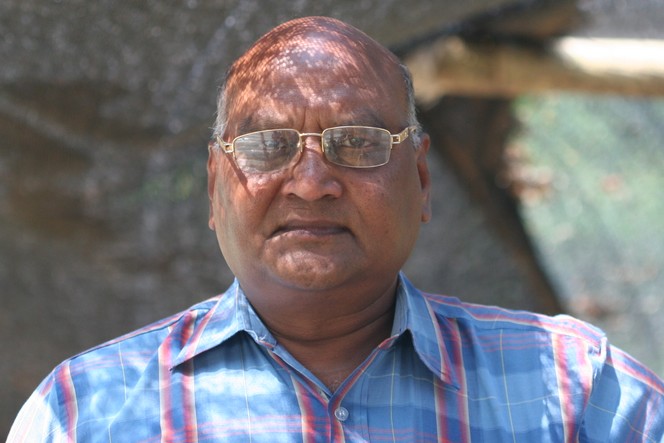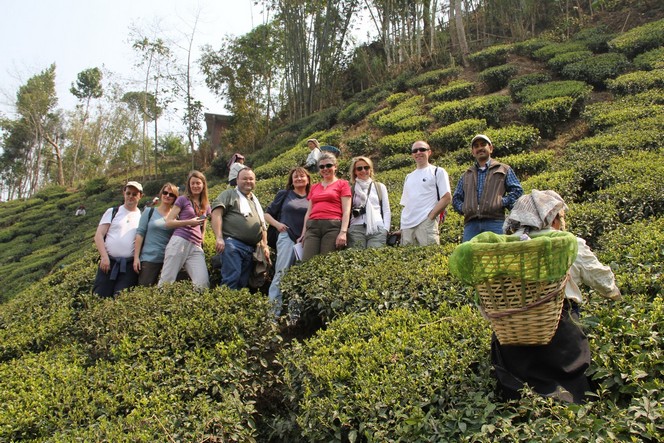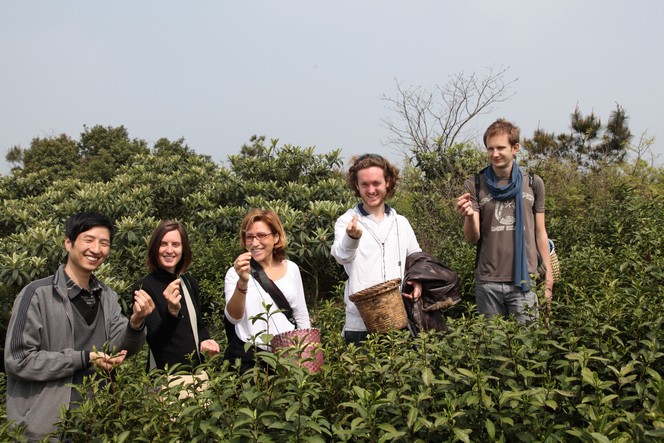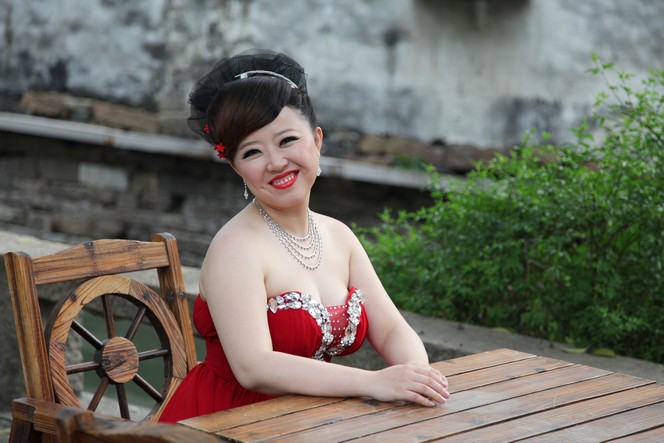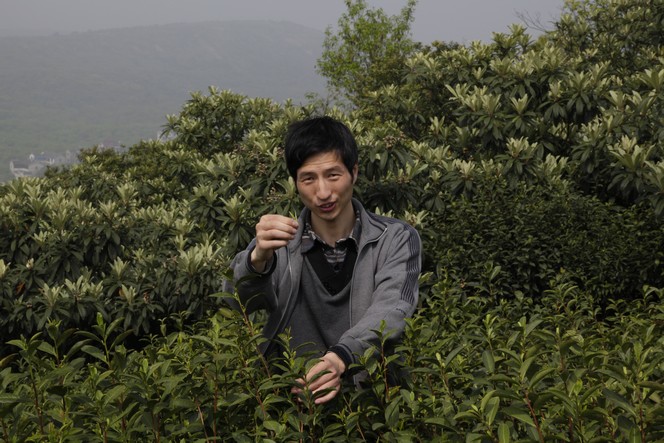If you’re looking for an unusual place to take your wedding photos, and like something a little different, why not try the Long Jing tea plantations (China). While his assistant reflects sunlight onto your radiant faces, the photographer will know just how to immortalise the special moment. Also, the same photographer will generally have some useful accessories to help your pictures stand out from others, instantly giving the happy couple a little more extra style.
Tea people
Mealtime in a Chinese tea factory
In Chinese tea factories, at mealtimes, everyone puts aside their work, arranges the tables and prepares for the festivities. Eating is one of the favourite pastimes of the Chinese. It is often a moment of conviviality and relaxation, a simple occasion shared by all. It ends with a tea, and sometimes a nap.
Tea pluckers bringing out their umbrellas
With the weather we’ve had this June, there has been no need to worry about sunstroke. This is not the case everywhere. For example, in Darjeeling this season, when the pluckers have brought out their umbrellas it has been to protect themselves from the sun, not the rain. The women have good taste in their choice of bright, varied colours, making this landscape very similar to a cup of Darjeeling itself. Its floral, flowery, vegetal notes are a real treat for the palate.
The story of Chinese poet Lu Yu
We owe the very first writing on tea to the Chinese poet Lu Yu. The Cha Jing, “The Classic of Tea”, dates back to the 18th century. In his book, Lu Yu discusses the nature of tea itself, but most importantly he sets out a method for preparing and tasting it. A statue of this tea fanatic can be found by the excellent Long Jing Tea Museum (China).
Dilli Baskota, un passionné de thé au Népal
Je termine tout juste ma sélection annuelle de thés de printemps en provenance du Népal. Ils seront disponibles dans quelques jours, le temps de les acheminer par avion. Cette année ce sont les plantations de Guranse et de Kuwapani qui ont produits les meilleurs lots. Ils sont remarquables et si vous n’y avez jamais goûté, dépêchez-vous ! Ils valent le détour.
D’autres jardins ont fait de gros progrès et je viens de réserver deux lots correspondants : l’un en provenance de Everest Tea Estate et l’autre issu de Kanchenjunga Tea Estate- une plantation sublime située à l’extrême nord de la Vallée d’Ilam et dirigée par mon ami Dilli Baskota que vous voyez ici. Un homme passionné par le thé et très impliqué dans le développement durable de sa région.
Gopal Somani, his experience is worthy of respect
Darjeeling teas harvested at this time of year have a very different bouquet to those plucked in the spring. Woody, fruity fragrances instead of vegetal aromas, for example. But their prestige is equally high, which is why I’m here, right now, selecting the best of them.
Every time I come to Darjeeling I make sure I visit Gopal Somani. We had lunch together on Saturday at his Puttabong plantation. He’s a wonderful man and his experience is worthy of respect: not only does he produce some of the best teas in the region, but he has also taught many other planters.
Eight students of the Tea School in Darjeeling
Carine Baudry, who runs the Tea School, travelled to Darjeeling last month accompanied by eight of her students. What a trip! This was a first for Carine, who returned just as enchanted as her fellow travellers, to whom she introduced this magnificent region and the art of producing tea. Carine has often travelled with me in India, Japan and China. But this was the first time she’d had the pleasure of teaching in the production region itself.
On the right, in the blue shirt, is Rajiv Gupta, manager of the Tumsong plantation.
On the tea routes with my colleagues
Most of the time I travel the tea routes alone, but I also really enjoy sharing with my colleagues the pleasure of walking among the tea plants and observing all the stages of the processing. These trips are very rewarding because we can spend time together talking about our shared passion, understanding, learning, tasting all sorts of teas, and discussing them endlessly. Here, on the right of Waterqian, who produces Bi Luo Chun, and in the middle of his tea garden, are Aurélie, Carine, Cyrille and Mathias. I took this photo last week.
Newly wed Chinese couples love going to Suzhou
The city of Suzhou is full of character. Many Chinese tourists come here to find some old-world charm. In the historic part of the city, canals run alongside the narrow streets, and many newly wed Chinese couples come here to make pictures. In fact you cannot walk more than a few paces before coming across a pair of young newlyweds posing under the watchful eye of the professional photographers, who are eager to capture their models in the right pose. This pretty bride exudes happiness as she smiles for the cameras.
Bi Luo Chun: one of the rarest China teas
Bi Luo Chun is one of the rarest and most prestigious China teas. Here, my friend Waterqian – one of the few farmers to produce the highest quality Bi Luo Chun – is showing me how much must be taken off the stem during the harvest: a small bud with just one leaf. This type of plucking is extremely rare. It explains the very high price of this tea, whose name means “Spiral of Spring Jade”. In one day, each worker only harvests around two kilos of fresh leaves which, after processing, will produce just two hundred grams of tea.

